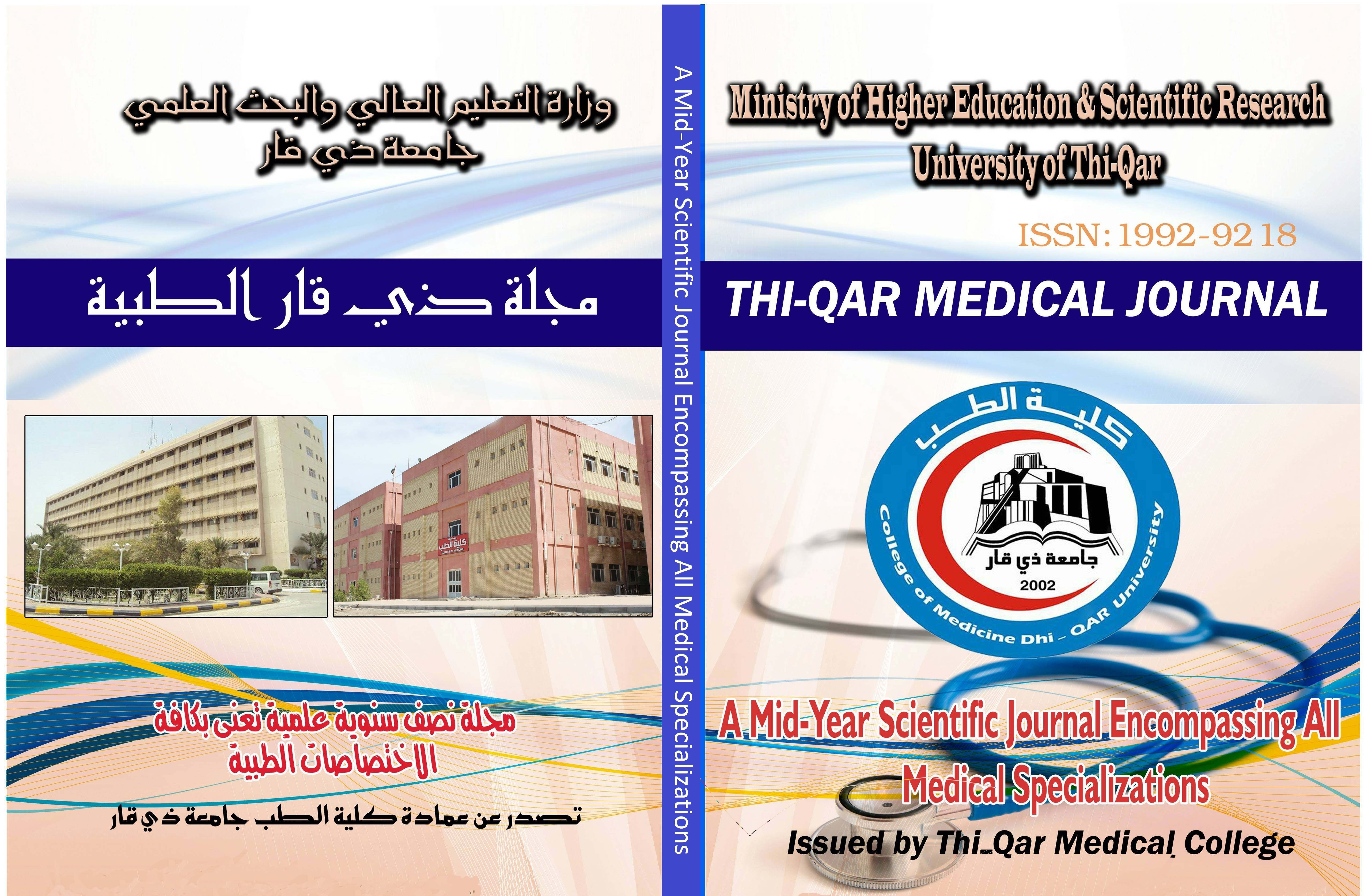Abstract
Background: Uncontrolled hypertension is a major concern among hypertensive patients. It
may be caused by various factors such as inadequate knowledge and inappropriate attitude,
unhealthy lifestyle, and ineffective treatment.
Objectives: To estimate the prevalence and determinants of controlled hypertension status
among adults in Nassiriyah city.
Design, Setting, and Participants: A cross sectional household survey was carried out in Thi
Qar Governorate, Southern Iraq, on 2148 adults (410 of them were known cases of
hypertension) from two areas in Nassiriyah city, aged 18 years and above, recruited between 1st
of November 2012 and 31stof October 2014 using multistage sampling.
Main Outcomes and Measures: Controlled hypertensive patient was defined as an individual
with self-reported treated hypertension with blood pressure measurements of less than
140/90 mmHg. Determinants were measured using a questionnaire -based interviewing.
Results: The overall prevalence of hypertension was 26.5% (19.1% were known hypertensives
and 7.4% were unrecognized hypertensives).Of the recognized hypertensives, only 35.4% (95%
CI 31.0%-39.8%) were with controlled blood pressure. The uncontrolled hypertension
subcategorized into those of isolated systolic and isolated diastolic blood pressure with a
prevalence of 6.8% and 4.0% respectively. Significant independent association was found
between control of hypertension and age, occupation, BMI, educational level, feeling of
irritability, family history of hypertension, physical inactivity, drug intake and type of drinking
water.
Conclusion: The prevalence of uncontrolled hypertension in Thi-Qar Governorate was high. This
necessitates effective preventive and control measures.
may be caused by various factors such as inadequate knowledge and inappropriate attitude,
unhealthy lifestyle, and ineffective treatment.
Objectives: To estimate the prevalence and determinants of controlled hypertension status
among adults in Nassiriyah city.
Design, Setting, and Participants: A cross sectional household survey was carried out in Thi
Qar Governorate, Southern Iraq, on 2148 adults (410 of them were known cases of
hypertension) from two areas in Nassiriyah city, aged 18 years and above, recruited between 1st
of November 2012 and 31stof October 2014 using multistage sampling.
Main Outcomes and Measures: Controlled hypertensive patient was defined as an individual
with self-reported treated hypertension with blood pressure measurements of less than
140/90 mmHg. Determinants were measured using a questionnaire -based interviewing.
Results: The overall prevalence of hypertension was 26.5% (19.1% were known hypertensives
and 7.4% were unrecognized hypertensives).Of the recognized hypertensives, only 35.4% (95%
CI 31.0%-39.8%) were with controlled blood pressure. The uncontrolled hypertension
subcategorized into those of isolated systolic and isolated diastolic blood pressure with a
prevalence of 6.8% and 4.0% respectively. Significant independent association was found
between control of hypertension and age, occupation, BMI, educational level, feeling of
irritability, family history of hypertension, physical inactivity, drug intake and type of drinking
water.
Conclusion: The prevalence of uncontrolled hypertension in Thi-Qar Governorate was high. This
necessitates effective preventive and control measures.
Keywords
control
Determinants
hypertension
Prevalence
Thi-Qar
